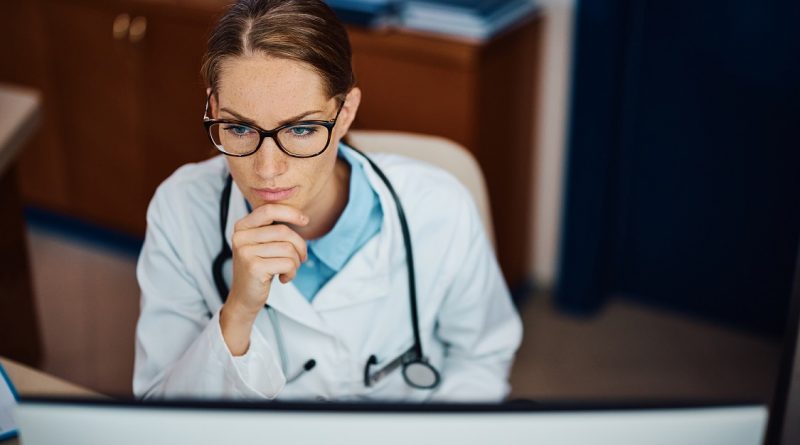Could Biometrics Assist in Diagnostics?
Most people are familiar with the idea of biometrics. Most modern phones and laptops come equipped with fingerprint scanners and the ability to unlock the devices using facial recognition. While helpful in keeping our devices secure or unlocking them more conveniently, could this technology be used for other purposes? How do we use biometric technology in medicine?
A Biometric Screening
The term biometric screening is often used in medicine, but it doesn’t involve the biometrics you’re probably picturing. Instead, it’s just a broad term describing a vital statistics collection. A biometric screening will likely include your body mass index (BMI), blood sugar, cholesterol levels and blood pressure.
If an employer or athletic coach requires a physical before participation, it will likely come in the form of biometric screening. It’s important to note that these screenings don’t involve any diagnosis, but they can identify possible risk factors that you can follow up with your primary care physician.
Biometric Architecture
What does the architecture of a biometric scanner look like? There are four primary components for fingerprints, the most common form of biometric identification. First is the user interface, which you use to input your fingerprint or other biometric signature
Next is the system database, which will store the information for anyone who’s allowed to access the system. The database for a personal device will be significantly smaller than the database for a commercial or medical system.
The third is the enrollment module, which works to enroll each person and their fingerprints into the database. Finally, the authentication module works to authenticate the identity of each person as they access the system using their biometrics. It sounds simple, but often all it takes is a fingerprint to protect a mobile device or secure a network against attack.
Other biometric locks, such as voice biometrics or facial recognition, use similar architecture to secure our devices and keep our information safe and secure.
It is important to note that biometric locks aren’t foolproof. If a person is unconscious, an assailant could place their finger on the biometric scanner to unlock the device. If you’re arrested, police need a warrant to unlock your phone if it’s protected with a password. Still, they don’t need one to unlock the device using fingerprint or facial recognition biometrics.
Brain-Printing Biometrics
Fingerprints and facial recognition aren’t the only forms of biometric authentication available. Eye scanners can identify people by the unique pattern in the iris illuminated by infrared light that is invisible to the unaided eye. In diagnostics, brain-printing biometrics (BPB) could use the brain’s unique structure — but you will not be unlocking your phone or laptop with a brain scan.
BPB could become a valuable tool for diagnosing and monitoring Alzheimer’s disease and other degenerative brain conditions. Early diagnostics improve patient outcomes and research shows that the best results appear when the disease is caught during its early asymptomatic stage. BPB allows medical professionals to more carefully monitor the patient’s brainwaves and the structure of the gray matter itself.
A Growing Need for Cybersecurity
The medical industry is often at the cutting edge of new technologies and many new devices and tools are connected to the internet. Creating a digital network means a new host of vulnerabilities could put patients at risk. Cyber attacks against medical facilities are becoming more common because medical data is worth up to 50 times more than a patient’s credit card information or social security number on the black market.
More than 40% of employees make mistakes that result in cybersecurity repercussions — and in particular, more than two-thirds of healthcare facilities reported at least one ransomware attack in 2021. Ransomware is a virus that allows hackers to encrypt an infected computer’s files, demanding an often exorbitant ransom in exchange for the decryption key.
Biometrics could help keep digital patient data safe by attaching the encrypted data to a unique biometric passkey. The patient and their care teams would be the only ones capable of accessing the files.
Keeping Patients Safe
Beyond diagnostics, biometrics could become a valuable tool for improving patient safety. Biometric identification for existing patients could verify their identity, linking them with their medical records without the need for exhausting questions or the potential for a typo that could identify them as the wrong patient.
It could also become a valuable tool for medication delivery. Nurses must manually verify the patient’s information before offering treatment. Imagine completing all that verification with the press of a fingerprint or a quick facial recognition scan?
When linked with a secure app on the patient’s smartphone, these biometric technologies could also help improve the overall patient experience. This integration could help make steps like check-in and filling out paperwork move a lot smoother. Connecting it to the patient’s phone’s fingerprint or facial recognition biometrics helps streamline the process.
The Future of Biometrics in Medicine
There are multiple applications for biometrics in medicine. We’ve just begun exploring the possible applications for it. To answer the initial question, yes — biometrics can assist with diagnostics, but that’s just the tip of the iceberg. We’ll likely see much more from biometrics in medicine in the coming years.











